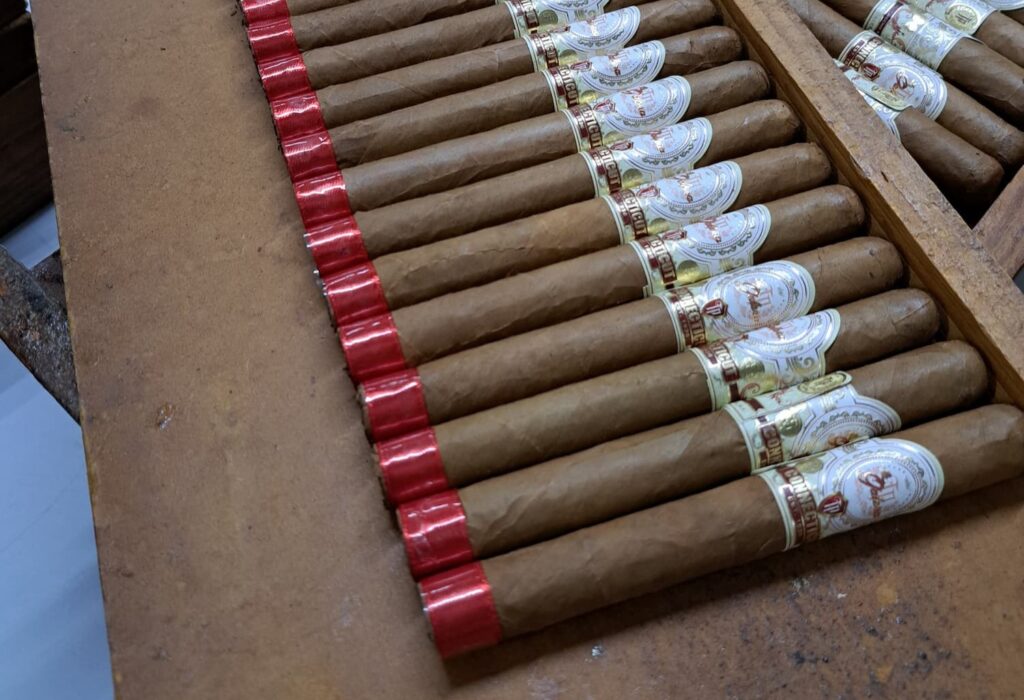The Anatomy of a Cigar: Understanding Its Structure
When you hold a fine cigar between your fingers, you’re not just holding a roll of tobacco. You’re holding a meticulously crafted piece of art, a blend of tradition and technique honed over centuries. Each part of a cigar, from the wrapper to the filler, plays a crucial role in its overall flavor, burn, and smoking experience. Let’s dive into the anatomy of a cigar and explore the distinct elements that make it a cherished indulgence for aficionados worldwide.
Do not forget to go check my guide on the Cigar Factories and the Dominican Republic!
1. The Wrapper: The Cigar’s Outer Shell
The wrapper is the outermost layer of the cigar, often referred to as the “face” of the cigar. It’s the first thing you see and touch, and it significantly influences the cigar’s flavor and appearance.
- Material: The wrapper is typically made from high-quality tobacco leaves, selected for their smooth texture and visual appeal. Common types include Connecticut Shade, Maduro, and Corojo, each offering unique flavor profiles.
- Color and Texture: Wrappers range in color from light tan to deep brown, known as Claro, Colorado, and Oscuro. The color is influenced by the curing process and can give clues about the cigar’s taste – lighter wrappers often indicate milder flavors, while darker wrappers suggest richer, more robust tastes.
- Influence on Flavor: Despite being a thin layer, the wrapper can contribute up to 60% of the cigar’s flavor. This is because the wrapper is in direct contact with the smoker’s lips and is the first to ignite and burn.

2. The Binder: The Hidden Hero
Beneath the wrapper lies the binder, which holds the cigar’s filler tobacco together. While it doesn’t get as much attention as the wrapper, the binder is crucial for the cigar’s structure and burn quality.
- Function: The binder’s primary role is to provide the cigar’s shape. It must be elastic enough to hold the filler yet strong enough to withstand the rolling process.
- Composition: Binders are generally thicker and less visually appealing than wrappers. They’re chosen more for their durability and burn characteristics than for flavor.
- Flavor Contribution: Though less significant than the wrapper, the binder still impacts the overall flavor. It’s typically neutral but can add subtle nuances depending on its origin and tobacco type.
3. The Filler: The Heart of the Cigar
The filler is the core of the cigar, comprising a blend of various tobacco leaves. This blend determines the cigar’s complexity, strength, and character.
- Types of Filler: There are two main types of fillers – Long Filler and Short Filler. Long fillers use whole leaves running the length of the cigar, providing a smoother, more consistent smoke. Short fillers, made from chopped or broken leaves, are often found in machine-made cigars and tend to be less expensive.
- Blend Composition: Cigar makers, or “blenders,” use leaves from different regions and parts of the tobacco plant to create distinct flavor profiles. The filler blend can include leaves from the ligero (top of the plant, providing strength), seco (middle, offering balance), and volado (bottom, aiding combustion).
- Influence on Experience: The filler dictates much of the cigar’s character. By combining various tobacco types, manufacturers can craft cigars that range from mild and creamy to strong and spicy.

Do not forget to go check my guide on the Cigar Factories and the Dominican Republic!
4. The Head: The Cigar’s Top End
The head of the cigar is the end that you cut before smoking. It’s a small but crucial part of the cigar’s structure.
- Capping: The head is sealed with a cap, a piece of wrapper leaf glued in place to hold the cigar together. Caps can be single, double, or even triple, affecting both aesthetics and functionality.
- Cutting: Properly cutting the head is essential to ensure a good draw and maintain the cigar’s integrity. Common cutting methods include straight cuts, V-cuts, and punches.
5. The Foot: The Cigar’s Ignition Point
The foot is the opposite end of the cigar from the head and is where you light the cigar.
- Construction: The foot is usually open, revealing the filler leaves inside. This end allows the smoker to observe the quality and density of the filler blend.
- Lighting: When lighting the foot, it’s important to toast it evenly to ensure a uniform burn and avoid ruining the cigar’s structure.

6. The Band: More Than Just Decoration
The cigar band, or label, wraps around the cigar’s body and serves several purposes beyond mere decoration.
- Brand Identification: The band often displays the cigar’s brand, line, and sometimes additional information about the blend or origin.
- Handling: It helps protect the wrapper from being damaged by handling, especially by oily or sweaty fingers.
- Collectability: For many enthusiasts, cigar bands are collectible items, representing the rich history and branding of various cigar makers.

Do not forget to go check my guide on the Cigar Factories and the Dominican Republic!
Conclusion
Understanding the structure of a cigar enhances your appreciation of the craftsmanship and tradition involved in its creation. Each part – from the wrapper to the filler – contributes to the unique experience of smoking a cigar. Next time you enjoy a fine cigar, take a moment to consider the careful selection and assembly of each element, and savor the artistry that goes into every puff.